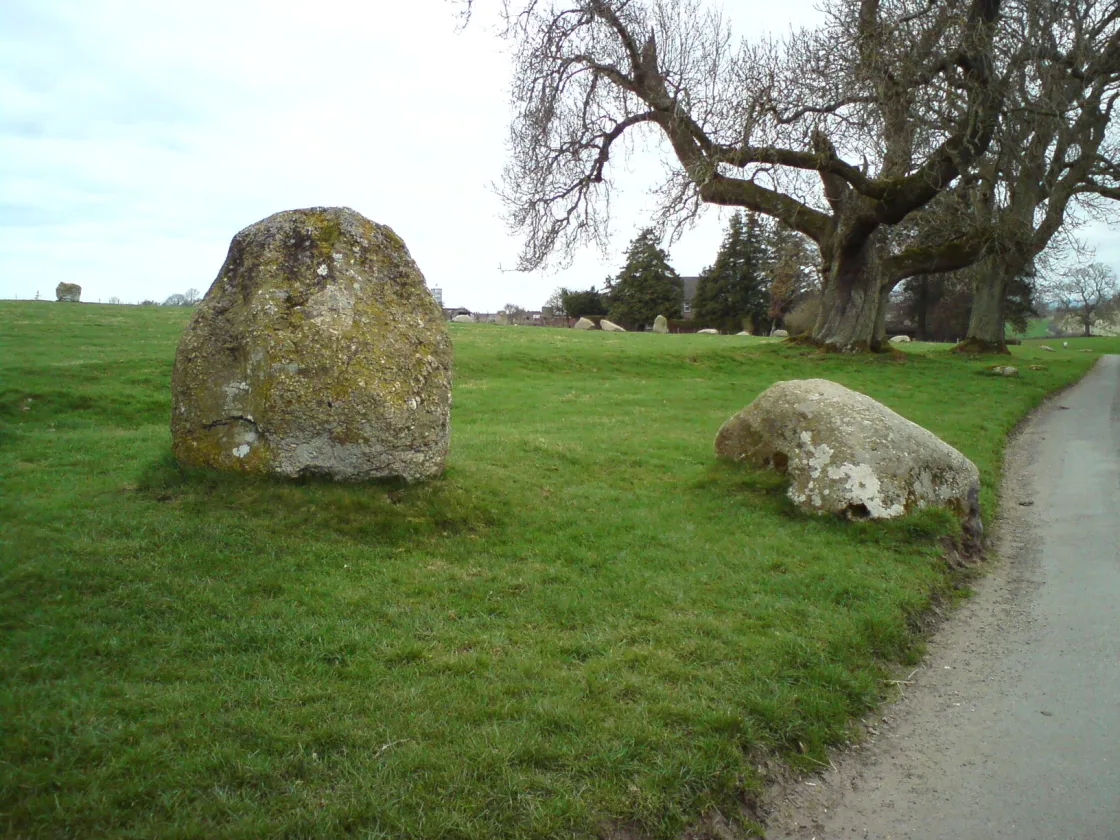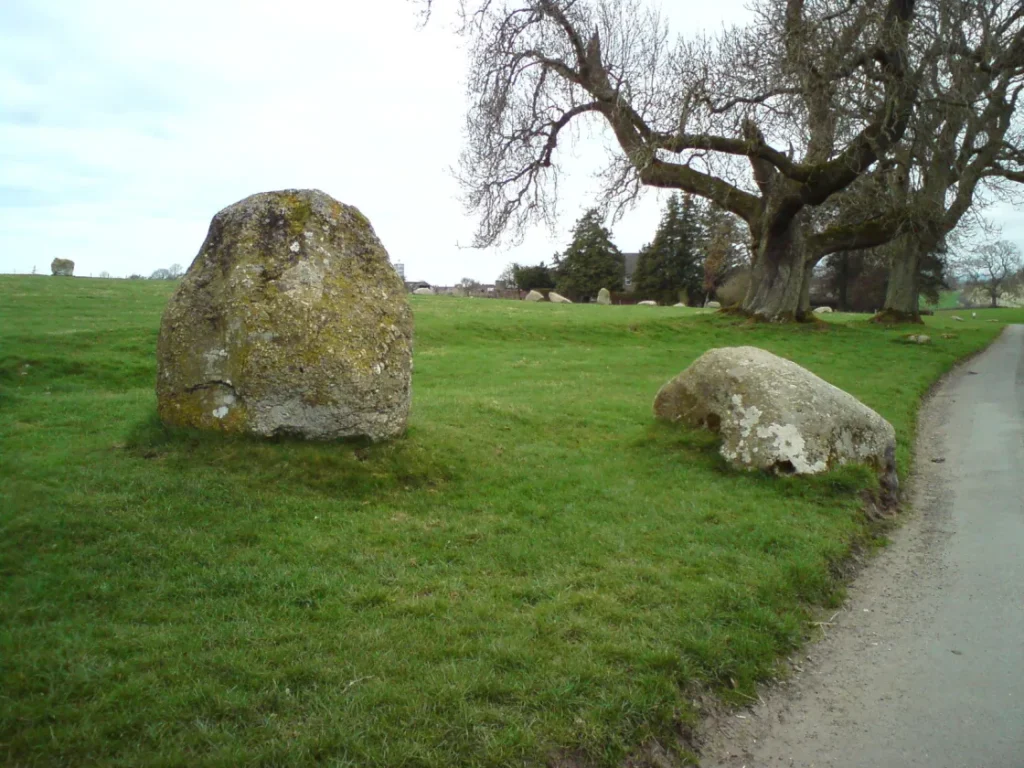Reviving the lost language: exploring Cumbric’s best and most fascinating history and legacy

Cumbric has its origins in the ancient Brittonic language spoken by the Celtic tribes that inhabited Britain before the arrival of the Romans. It was primarily spoken in the northern parts of Britain, including modern-day Cumbria, southern Scotland, and parts of Northumberland. The exact historical background of Cumbric is still a subject of debate among linguists and historians.
Cumbric is closely related to other Celtic languages such as Welsh, Cornish, and Breton. These languages belong to the Brythonic branch of Celtic languages, which were spoken in Britain before the arrival of the Gaelic-speaking Celts from Ireland. Over time, Cumbric evolved and developed its own unique features, distinct from the other Celtic languages.
Cumbric’s Unique Features: A Linguistic Analysis
Cumbric, like other Celtic languages, has its own distinct phonology, grammar, and syntax. It shares many similarities with Welsh, but also has some unique features that set it apart. The phonology of Cumbric is characterized by its use of lenition, which is the softening or mutation of consonants at the beginning of words. This lenition is a common feature in Celtic languages and adds to the musicality and rhythm of the language.
In terms of grammar, Cumbric follows a similar structure to other Celtic languages. It is a verb-subject-object language, meaning that the verb usually comes before the subject and object in a sentence. However, Cumbric also has some unique grammatical features, such as the use of prepositions instead of postpositions like in Welsh.
The Decline and Disappearance of Cumbric: Causes and Consequences
The decline of Cumbric can be attributed to several factors. One major factor was the political and social changes that occurred in Britain during the medieval period. The Anglo-Saxon invasions and subsequent Norman conquest led to the displacement of the Celtic-speaking populations in many parts of Britain. This resulted in a decline in the use of Cumbric as speakers were assimilated into the dominant English-speaking society.
Another factor that contributed to the decline of Cumbric was the lack of written records. Unlike Welsh and other Celtic languages, there are very few written records of Cumbric. This made it difficult for the language to survive and be passed down through generations.
The consequences of language loss are far-reaching. When a language becomes extinct, we lose not only a means of communication but also a unique perspective on the world. Language shapes our thoughts, beliefs, and cultural practices. When a language dies, we lose a part of our collective human heritage. The loss of Cumbric has resulted in the erasure of a rich linguistic and cultural tradition that once thrived in Britain.
The Legacy of Cumbric: Its Influence on Modern Languages
| Topic | Data/Metrics |
|---|---|
| Language Speakers | Estimated to have been spoken by 20,000-30,000 people in the 10th century |
| Geographical Distribution | Spoken in parts of Scotland, England, and Wales |
| Causes of Decline | Assimilation into English language and culture, political and social changes, and lack of written records |
| Consequences | Loss of cultural identity and heritage, limited understanding of the language and its history, and impact on the development of other Celtic languages |
Although Cumbric is no longer spoken as a living language, its influence can still be seen in modern English and Welsh. Many place names in the regions where Cumbric was spoken have Cumbric origins. For example, the name “Cumbria” itself is derived from the Cumbric word “cwmbr,” meaning “valley.” Similarly, the names of rivers, mountains, and other geographical features in the region often have Cumbric roots.
In addition to place names, there are also borrowed words and phrases from Cumbric that have made their way into modern English and Welsh. These words provide a glimpse into the vocabulary and cultural practices of the Cumbric-speaking people. By studying these linguistic traces, we can gain a better understanding of the history and culture of the region.
Reviving Cumbric: Efforts and Challenges
There are ongoing efforts to revive Cumbric as a spoken language. Language revitalization movements aim to bring back endangered languages by teaching them to new generations and creating opportunities for their use in everyday life. These efforts often involve community involvement and support, as well as collaborations with linguists and language experts.
However, reviving an endangered language like Cumbric comes with its own set of challenges. One major challenge is the lack of fluent speakers and resources. With very few native speakers left, it becomes difficult to pass down the language to future generations. Additionally, there is a lack of written records and materials for learning Cumbric, making it even more challenging for language revitalization efforts.
Despite these challenges, it is crucial to continue supporting and promoting the revival of Cumbric and other endangered languages. Language is an integral part of our identity and cultural heritage, and preserving linguistic diversity is essential for a more inclusive and enriched society.
Cumbric Literature and Folklore: A Window into the Past

Cumbric literature and folklore provide valuable insights into the culture and society of the Cumbric-speaking people. Although there are very few surviving written records, there are some notable works that have been preserved. These works often contain myths, legends, and historical accounts that shed light on the beliefs, traditions, and way of life of the Cumbric-speaking people.
One example of Cumbric literature is the “Y Gododdin,” a medieval Welsh poem that tells the story of a group of warriors from the Gododdin kingdom who fought against the Angles in the 6th century. The poem provides a glimpse into the heroic culture and warrior ethos of the Cumbric-speaking people.
Folklore also plays an important role in preserving the memory of Cumbric. Folktales, songs, and oral traditions passed down through generations provide valuable insights into the cultural practices and beliefs of the Cumbric-speaking people. By studying these folklore traditions, we can gain a deeper understanding of their way of life and their connection to the land.
The Role of Cumbric in Shaping British History and Culture
Cumbric-speaking regions played a significant role in shaping British history and culture. The northern parts of Britain, where Cumbric was spoken, were often at the forefront of political and social changes. The interactions between the Celtic-speaking tribes, the Anglo-Saxon invaders, and later the Norman conquerors shaped the cultural landscape of Britain.
The influence of Cumbric can still be seen in British identity and culture today. The place names, folklore traditions, and linguistic traces left by Cumbric provide a tangible link to our shared history. Recognizing and celebrating this linguistic diversity is essential for a more inclusive and accurate understanding of British history and culture.
Cumbric Place Names: A Testament to its Existence
Cumbric place names are a testament to the existence of the language and its speakers. Many place names in the regions where Cumbric was spoken have Cumbric origins, providing valuable linguistic and cultural heritage. For example, the name “Penrith” is derived from the Cumbric words “pen” meaning “head” and “rith” meaning “ford,” referring to its location at the head of the ford.
Preserving these place names is crucial for maintaining our cultural heritage and ensuring that the memory of Cumbric is not lost. Place names provide a tangible link to the past and serve as a reminder of the diverse linguistic and cultural traditions that once thrived in Britain.
Preserving the Memory of Cumbric: The Importance of Language Conservation
The preservation of endangered languages like Cumbric is of utmost importance. Language conservation ensures that we do not lose a part of our linguistic and cultural heritage. It allows us to gain a deeper understanding of our shared human history and cultural diversity.
There are several ways to support endangered language revitalization efforts. One way is to promote awareness and education about endangered languages, their importance, and the challenges they face. This can be done through schools, community organizations, and cultural events.

Another way to support language conservation is by supporting language revitalization initiatives financially. Donations can help fund language classes, materials, and resources for teaching endangered languages. Additionally, individuals can participate in language learning programs or volunteer their time to support language revitalization efforts.
In conclusion, Cumbric is a forgotten language that holds great significance in the history and culture of Britain. Studying and preserving endangered languages like is crucial for maintaining our linguistic and cultural heritage. By understanding the origins, unique features, and decline , we can gain a deeper appreciation for the importance of language conservation. Reviving and other endangered languages requires community involvement, support, and collaboration with linguists and language experts. Preserving the memory of is not only a testament to its existence but also a celebration of linguistic diversity and cultural heritage.

If you’re interested in the linguistic legacy of ancient languages, you might find this article on “The Fascinating Linguistic Legacy of Tokharian B: Unraveling the Mysteries of an Ancient Language” intriguing. It delves into the history and significance of Tokharian B, an extinct language that was once spoken in Central Asia. Discover how linguists are piecing together this ancient language and uncovering its secrets. Check out the article here.
FAQs
What is Cumbric Language?
Cumbric Language is an extinct Celtic language that was spoken in Cumbria, England, during the Early Middle Ages.
When was Language spoken?
Cumbric Language was spoken during the Early Middle Ages, from the 6th to the 12th century.
What is the origin of Language?
Cumbric Language is believed to have originated from the Brythonic branch of the Celtic language family.
What is the status of Language today?
Cumbric Language is considered an extinct language, as there are no known native speakers of the language today.
What is the significance of Language?
Cumbric Language is significant as it provides insight into the linguistic and cultural history of Cumbria and the surrounding areas during the Early Middle Ages.
What is the relationship between Language and Welsh?
Cumbric Language and Welsh are both members of the Brythonic branch of the Celtic language family, and share many similarities in terms of grammar and vocabulary.
What is the current state of research on Language?
Research on Cumbric Language is ongoing, with scholars continuing to study the language and its historical context in order to gain a better understanding of its significance.
Indigenous languages: the importance of their preservation
Imagine that the language you speak disappears and that you have to learn to speak or use another language. Communication is fundamental in all societies and the existence of indigenous languages plays an important role in the defense of human rights and peace. In this post we want to talk to you about their importance and the work we do to preserve them.
For example, the Inuit (people who live in the Arctic regions of North America) have almost 50 different words to describe snow in their different states. Snow is a very present element in their lives and they have learned a lot from it. That type of knowledge that is reflected in language cannot be lost. The language we use defines us in the world, is part of our history and our culture , and helps us participate in different aspects of society.
Why are indigenous languages important?
Indigenous peoples, according to United Nations data, form more than 5,000 different groups in about 90 countries. They represent more than 5% of the world’s population but are one of the poorest populations. Indigenous languages
are important for several reasons:
They provide unique knowledge and ways of understanding the world differently.
-
- They help promote peace and sustainable development.
- They promote the protection of human rights and freedoms of indigenous peoples.
- They represent a boost to social inclusion and literacy.
- They contribute to the diversity of values, cultures and languages.
- Migration for economic reasons . It involves the disappearance of traditional ways of life and different languages, in order to adapt to the place of destination.
- Social pressure to speak dominant languages . Sometimes it is understood that it is necessary to speak these dominant languages to participate in society and enjoy progress in the economy.
- The lack of legal recognition . Although, as we will see later, the recognition of indigenous peoples is regulated at the international level, many countries have not yet promoted it in their legislation, which causes the disappearance of indigenous languages.
What factors are used to know if a language is in danger of extinction?
In general, we can say that to determine if a language is in danger of extinction, various factors are used such as:
- If it is transmitted from one generation to another.
- The number of people who speak it.
- The percentage of people who speak it compared to the total population.
- The existence of material (books, dictionaries, etc.) that can be used to teach the language.
- The recognition by the authorities of that language as an official language.
- The documents that exist in that language.
Protection of the rights of indigenous peoples

-
The regulation of the protection of the rights of indigenous peoples at the international level derives from the United Nations Declaration on the Rights of Indigenous Peoples, approved in 2007, which in its article 13 establishes that:
Indigenous peoples have the right to revitalize, use, foster and transmit to future generations their histories, languages, oral traditions, philosophies, writing systems and literatures and to name and maintain their communities, places and people.
States will adopt effective measures to ensure the protection of this right and also to ensure that indigenous peoples can understand and be understood in political, legal and administrative actions, providing for this purpose, when necessary, interpretation services or other appropriate means.However, the reality is that, as we have seen, indigenous languages continue to disappear and it is in our power to preserve them.
-
What can be done to protect indigenous languages?
There are numerous examples of indigenous peoples who have managed to revitalize the use of indigenous languages. For example, the indigenous people of Hawaii have managed to have some subjects taught in Hawaiian in public schools. However, more intense work is necessary to ensure that the wealth that indigenous languages provide survives. Some of the actions that can be carried out are:
- Introduction of the use of indigenous languages in the Public Administration that provides services in indigenous territories.
- Dissemination of activities in indigenous territories or where indigenous people have moved, with documentation in indigenous languages .
- Creation of indigenous language study centers in universities.
- Publishing publications in indigenous languages
- Teaching indigenous languages in schools.
